Goaltide Daily Current Affairs 2020
Current Affair 1:
New study helps monitor trends in phytoplankton biomass in Bay of Bengal
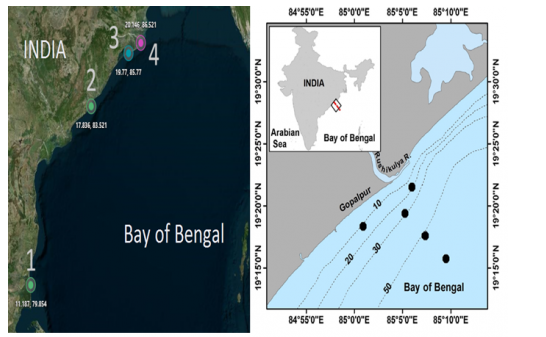
Researchers have discovered way to measure the quantity of chlorophyll-a in the Bay of Bengal — a dominant pigment found in phytoplankton cell and present in a few areas of the ocean — in real-time. The research was carried out by a team of scientists from the Indian National Centre for Ocean Information Services (INCOIS).
Importance of Phytoplankton:
- Phytoplanktons are tiny microscopic plants found in the ocean. They are important ecological indicators that regulate life in ocean.
- They have chlorophyll to capture sunlight and use photosynthesis to turn it into chemical energy.
- They consume carbon dioxide and release oxygen.
- All phytoplankton photosynthesize, but some get additional energy by consuming other organisms.
- Phytoplanktons contribute to more than half of the oxygen that we breathe. That apart, they influence our climate by absorbing human-induced carbon dioxide, a heat-trapping greenhouse gas.
- They also serve as the foundation of the aquatic food web.
Study:
- The team of scientists closely tracked the long-term trends of chlorophyll-a in the northwestern Bay of Bengal. They also studied the co-existing factors that affected the increasing pattern of chlorophyll.
- The study was based on in-situ and satellite data spanning over the last 16 years. They observed significant increase of chlorophyll-a concentration during pre-southwest monsoon seasons.
- The other parameters studied were total suspended matter (TSM) and coloured dissolved organic matter (CDOM), which are optically active substances in water.
- Apart from phytoplankton bloom contributing to this increase of chlorophyll-a in nearshore waters, the study found physical forces such as upwelling, wind-induced vertical mixing, convective overturn and local circulation pattern influenced the peaks by supplying dissolved chemical input from various sources including river / terrigenous runoff.
The information on marine environmental parameters has become increasingly important as they serve as a basis for monitoring climate change, river discharge, and impact of pollution in the ocean.
One NASA Mission related to Phytoplankton:
North Atlantic Aerosols and Marine Ecosystems Study (NAAMES)
The North Atlantic Aerosols and Marine Ecosystems Study (NAAMES) is a five-year investigation to resolve key processes controlling ocean system function, their influences on atmospheric aerosols and clouds and their implications for climate.

Current Affair 2:
Bonded Labour in India
Swami Agnivesh an activist, and crusader against bonded labour is no more. But we will see few provisions of bonded labour in respect to India.
We will learn about Bonded Labour in India
Also known as debt bondage, bonded labor is a specific form of forced labor in which compulsion into servitude is derived from debt. Wait you will understand more clearly through image given below:
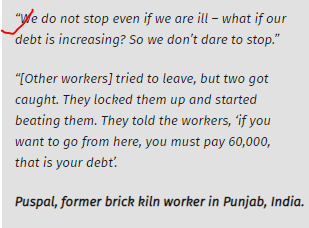
Constitutional provisions on forced labour:
- Article 23 of the 1949 Constitution of India outlaws both the trafficking of human beings and forced labor, but the legislation defining and banning bonded labor was only approved by Parliament in 1976.
- Also, under the Constitution of India, Labour is a subject in the Concurrent List where both the Central & State Governments are competent to enact legislation subject to certain matters being reserved for the Centre.
Learn the background of bonded labour. It might help you with Prelims exam and even mains exam.
The issue of 'bonded labour' came to the list of national priority when it was included in the old 20-Point Programme in 1975. The Bonded Labour System (Abolition) Ordinance was promulgated on 25th October 1975. This was later on replaced by the Bonded Labour System (Abolition) Act, 1976. This Act provides for the abolition of the system of bonded labour with simultaneous liquidation of their debts.
Since the subject is included in the Concurrent List, the Union Government stepped in to assist the State Governments in their task of rehabilitation of released bonded labourers. Accordingly, Ministry of Labour & Employment launched a Centrally Sponsored Scheme for rehabilitation of bonded labourers in May 1978.
The Centrally Sponsored Scheme for Rehabilitation of Bonded Labourers 1978 was last revised in May 2000. It was realized that the scheme was not effective in elimination of Bonded Labour System and a revamp was necessary in the larger public interest. In 2016, a revamp scheme was launched as: Central Sector Scheme for Rehabilitation of Bonded Labourer – 2016. Under this scheme financial assistance to the extent of Rs. 3 lakhs provided to released bonded labourers along with other non-cash assistance for their livelihood.
Any ILO ratification on Forced labour?
The Government of India has ratified the ILO Convention C029 on 30tn November 1954 which inter alia defines forced labour as "all work or service which is exacted from any person under the menace of penalty and for which the said person has not offered himself voluntarily".
A small learning. Basics. Remember this.
Current Affair 3:
Swadesh Darshan Scheme
Ministry of Tourism has undertaken development of tourism related infrastructure and facilities at various Buddhist Sites in the country under its flagships schemes of Swadesh Darshan & PRASHAD.

In due recognition to this the Government of India, Ministry of Tourism launched the Swadesh Darshan Scheme (Central Sector Scheme)– for integrated development of theme-based tourist circuits in the country in 2014-15. It is under the aegis of Ministry of Tourism.
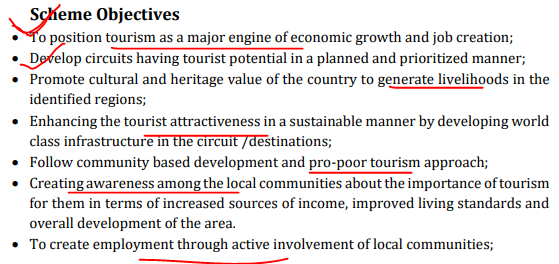

Remember these circuits themes.
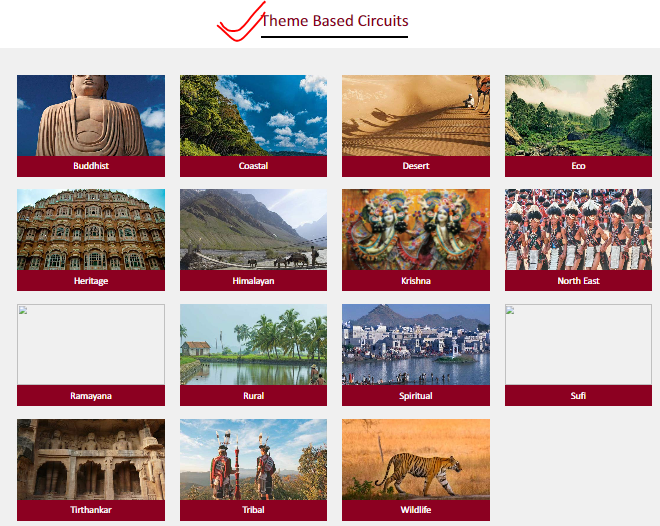

Current Affair 4:
Deputy Chairman of Rajya Sabha
Harivansh Narayan Singh re-elected as Rajya Sabha Deputy Chairman. We will see some important provisions related to Deputy Chairman – including Constitutional and by Convention.
He is most confused personality for UPSC Aspirant. His appointment, tenure, removal, functions, etc., everything we will learn today. Full clarity in Learning.
Rajya Sabha elects a Deputy Chairman to perform the functions of the Chairman in case of a vacancy in the office of the Chairman or when the Vice-President is acting as or discharging the functions of the President.

Removal of Deputy Chairman:

Order of Precedence
The Deputy Chairman occupies the tenth place in the order of precedence along with Ministers of State of the Union, Members of the Planning Commission and the Deputy Speaker of the Lok Sabha.
Power of Deputy Chairman:
During the absence of the Chairman from any sitting of the House, the Deputy Chairman acts as Chairman. He/She has the same powers as the Chairman when presiding over a sitting of the House and all references to the Chairman in the Rules of Procedure and Conduct of Business in the Rajya Sabha are deemed to be references to the Deputy Chairman when he/she so presides. See below also the difference between ‘when seat is vacant and when there is absence’.

Can Deputy Chairman Preside while a resolution for his removal is under consideration? NO. See below Article 92.

Does Deputy Speaker have right to speak or vote in the House?
The Deputy Chairman can speak in the House, take part in its deliberations and vote as a member on any question before the House, but he/she can do so only when the Chairman is presiding. When the Deputy Chairman himself/herself is in the Chair, he/she cannot vote except in the event of equality of votes.
Second schedule lists the emoluments for holders of constitutional offices. Does Deputy Speaker find his name under it? YES.

Deputy Chairman does not sponsor Bills, resolutions
As per convention, the Deputy Chairman does not sponsor Bills, resolutions, etc., nor does he/she table questions.

Panel of Vice-Chairmen:
The Chairman, from time to time, nominates from amongst the members of the House, a panel of not more than six Vice-Chairmen. In the absence of the Chairman and the Deputy Chairman, one of them presides over the House.

- In nominating members to the panel of Vice-Chairmen, the Chairman gives consideration to the strength of various parties in the House and as per convention selects some members from the opposition parties/groups for nomination to the panel.
- The Vice-Chairman, when presiding over a sitting of the House, has the same powers as the Chairman when so presiding.
- A Vice-Chairman while presiding cannot vote in the first instance and has to exercise a casting vote in the case of an equality of votes.
- A Vice-Chairman holds office until a new panel of Vice-Chairmen is nominated. The same member may also be re-nominated. If a Vice-Chairman resigns his office, another member may be nominated in his place.
When neither the Chairman nor the Deputy Chairman nor a Vice-Chairman is present to preside, such other member as may be determined by the House acts as the Chairman. The practice is that the outgoing Presiding Officer requests a member to take the Chair with the approval of the House. Such a member continues to preside temporarily until the Deputy Chairman, or a Vice-Chairman becomes available to preside. In other words, such a member cannot preside when a Vice-Chairman is present in the Chamber.

No appeal against the decision of Deputy Chairman/Vice-Chairman
As already stated, the Deputy Chairman or a member of the panel of Vice-Chairmen when presiding has the same powers as the Chairman when presiding over the sitting of the House. It has been consistently held that no appeal lies to the Chairman against a ruling given by the Deputy Chairman or any other member presiding over a sitting of the House in the absence of the Chairman. The ruling given from the Chair settles the matter then before the House and cannot be reopened.

However, whenever a point raised in the House needs some consideration or involves application of precedents or study, it is open to the Deputy Chairman or the Vice-Chairman to reserve the matter for the consideration and decision of the Chairman.
Chairmen of Parliamentary Committees
The Chairman of a Parliamentary Committee is appointed by the Chairman from amongst the members of the Committee. In the Rajya Sabha, the offices of Committee Chairmen are shared by ruling and opposition parties by informal arrangement and consultations. This facilitates the Chairman's task of appointing Committee Presiding Officers and Parliamentary Functionaries.
The Chairman is the Chairman of three Committees—Business Advisory, Rules and General Purposes. If the Deputy Chairman is a member of any other Committee, he/she is invariably appointed the Chairman of that Committee, for instance, the Committee of Privileges. In the case of Joint/Select Committees on Bills initiated in the Rajya Sabha, the Chairman may be a member who does not belong to the ruling party. The following are the instances of members not belonging to the ruling party who were appointed Chairmen of various Committees:
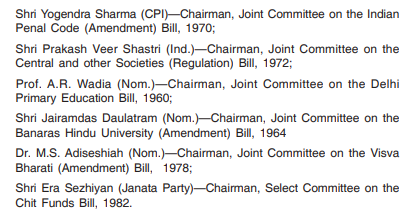
Why I have given various examples after each provision is: It helps you to believe the document and also helps in remembering.
Current Affair 5:
India elected member of UN Commission on Status of Women

India got elected as Member of the UN Commission on the Status of Women, the principal global body focussed on gender equality and women empowerment.
About the UN Commission
The Commission on the Status of Women (CSW) is the principal global intergovernmental body exclusively dedicated to the promotion of gender equality and the empowerment of women.
The CSW is instrumental in promoting women’s rights, documenting the reality of women’s lives throughout the world, and shaping global standards on gender equality and the empowerment of women.

The Commission on the Status of Women (CSW) is a functional commission of the UN Economic and Social Council (ECOSOC).
Forty-five Member States of the United Nations serve as members of the Commission at any one time. The Commission consists of one representative from each of the 45 Member States elected by the Economic and Social Council on the basis of equitable geographical distribution:
- 13 members from Africa
- 11 from Asia
- nine from Latin America and Caribbean
- eight from Western Europe and other States
- four from Eastern Europe
Members are elected for a period of four years.
One thing you remember, in UPSC Prelims they have asked one question:
|
“Beijing Declaration and Platform for Action” is related to: Empowering of Women Rights. |
<< Previous Next >>



